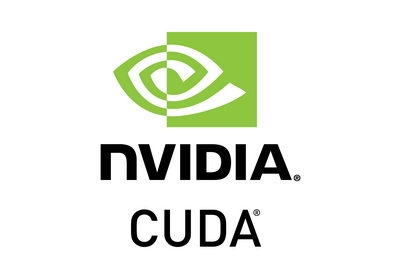CUDA (Compute Unified Device Architecture): Harnessing The Power Of GPUs For General-Purpose Computing
Category: COMPUTER SCIENCE | 4th January 2024, Thursday

CUDA, Short For Compute Unified Device Architecture, Is A Parallel Computing Platform And Application Programming Interface (API) Model Developed By NVIDIA. It Allows Developers To Use NVIDIA GPUs (Graphics Processing Units) For General-purpose Processing, Extending The Traditional Graphics Rendering Capabilities Of GPUs To A Broader Range Of Computational Tasks. CUDA Has Gained Widespread Adoption In Various Scientific, Engineering, And Artificial Intelligence Applications Due To Its Ability To Unlock The Massive Parallel Processing Power Inherent In Modern GPUs.
Historical Context: CUDA Emerged In The Mid-2000s When GPUs Were Primarily Designed For Graphics Rendering. However, Researchers And Developers Recognized The Potential For GPUs To Accelerate General-purpose Computing Tasks By Leveraging Their Parallel Architecture. NVIDIA Took The Lead In Developing CUDA, Providing A Platform That Allows Programmers To Tap Into The Parallel Processing Capabilities Of GPUs For Non-graphical Computations.
Key Components:
-
CUDA-enabled GPU: The Cornerstone Of CUDA Is The GPU Itself. CUDA Is Designed To Work Specifically With NVIDIA GPUs, Which Are Equipped With Numerous Parallel Processing Cores Capable Of Handling A Large Number Of Tasks Simultaneously. These Cores, Organized Into Streaming Multiprocessors (SMs), Allow For The Execution Of Parallel Workloads.
-
CUDA Toolkit: The CUDA Toolkit Is A Set Of Software Tools, Libraries, And Compilers Provided By NVIDIA To Facilitate CUDA Development. It Includes The CUDA Runtime, Compiler, Libraries, And Development Tools Necessary For Creating CUDA Applications. Developers Use Programming Languages Like C, C++, And Fortran To Write CUDA Code.
-
CUDA C/C++: CUDA Extends Traditional Programming Languages Like C And C++ With GPU-accelerated Features. This Allows Developers To Write Code That Runs On Both The CPU And GPU, Seamlessly Offloading Parallelizable Portions Of The Code To The GPU For Faster Execution.
-
CUDA Libraries: NVIDIA Provides A Suite Of Optimized Libraries That Are GPU-accelerated, Covering Various Domains Such As Linear Algebra, Signal Processing, And Image Processing. These Libraries Simplify The Development Process By Offering Pre-built Functions That Leverage The Parallel Processing Power Of GPUs.
Parallel Processing Paradigm: At The Heart Of CUDA Is The Concept Of Parallel Processing. Traditional CPUs Are Designed For Sequential Processing, Executing One Instruction At A Time. In Contrast, GPUs Excel At Parallel Processing, Allowing Them To Handle Thousands Of Tasks Concurrently. CUDA Enables Developers To Express Parallelism Explicitly, Dividing Tasks Into Smaller, Independent Threads That Can Be Executed Concurrently On The GPU.
Programming Model: Developers Write CUDA Programs Using A Combination Of Host Code (running On The CPU) And Device Code (running On The GPU). The Host And Device Communicate Through Function Calls And Data Transfers. The Parallel Portions Of The Code Are Offloaded To The GPU, Leveraging Its Parallel Architecture, While The Sequential Parts Run On The CPU.
Applications And Impact: CUDA Has Had A Profound Impact On Various Scientific And Computational Fields. It Has Been Widely Adopted In Domains Such As Computational Physics, Molecular Dynamics, Financial Modeling, And Deep Learning. The Parallel Processing Power Of GPUs Accelerates Simulations And Computations, Enabling Researchers And Engineers To Tackle More Complex Problems In Less Time.
In The Field Of Artificial Intelligence, CUDA Has Played A Pivotal Role In The Development And Training Of Deep Neural Networks. Deep Learning Frameworks Like TensorFlow And PyTorch Utilize CUDA To Harness The Parallel Capabilities Of GPUs, Significantly Speeding Up The Training Of Complex Models.
Challenges And Future Directions: While CUDA Has Been Highly Successful, It Is Not Without Challenges. One Significant Limitation Is Its Proprietary Nature, Restricting Its Use To NVIDIA GPUs. Efforts Are Underway To Develop Open Standards Like OpenCL And SYCL That Aim To Provide A More Vendor-neutral Approach To GPU Programming.
Looking Ahead, The Future Of CUDA May Involve Increased Collaboration With Open Standards And A Broader Range Of Hardware. As The Demand For Accelerated Computing Continues To Grow, The Development Of More Versatile And Accessible Programming Models Will Likely Shape The Landscape Of GPU Computing.
Conclusion: CUDA Has Revolutionized The Use Of GPUs, Transforming Them From Specialized Graphics Processors Into Powerful Engines For General-purpose Parallel Computing. Its Impact Spans Scientific Research, Engineering Simulations, And Artificial Intelligence. As Technology Evolves, The Landscape Of GPU Computing Will Continue To Change, And CUDA Is Likely To Adapt And Play A Crucial Role In Shaping The Future Of High-performance Computing.
Tags:
What Is Compute Unified Device Architecture (CUDA)?
